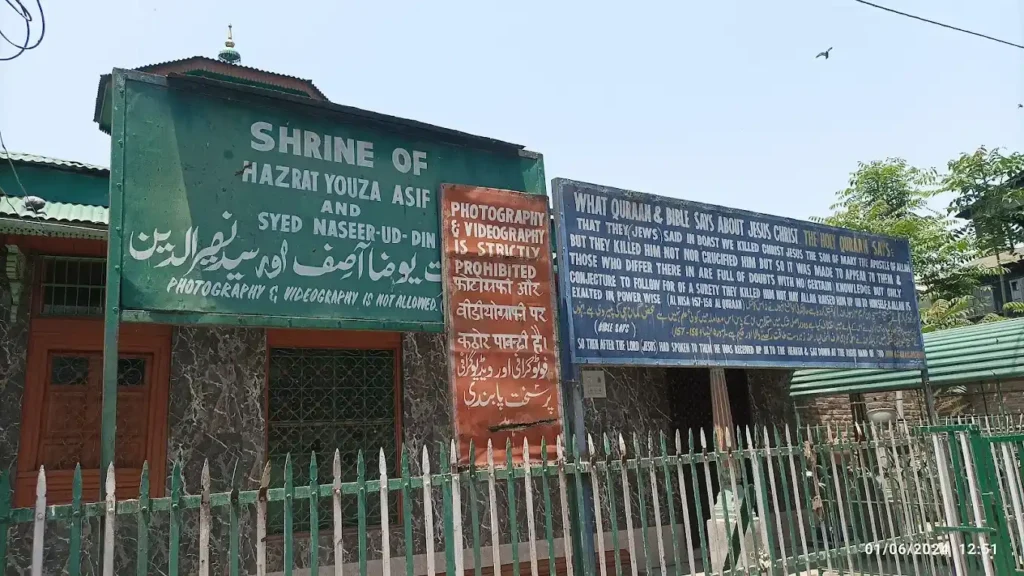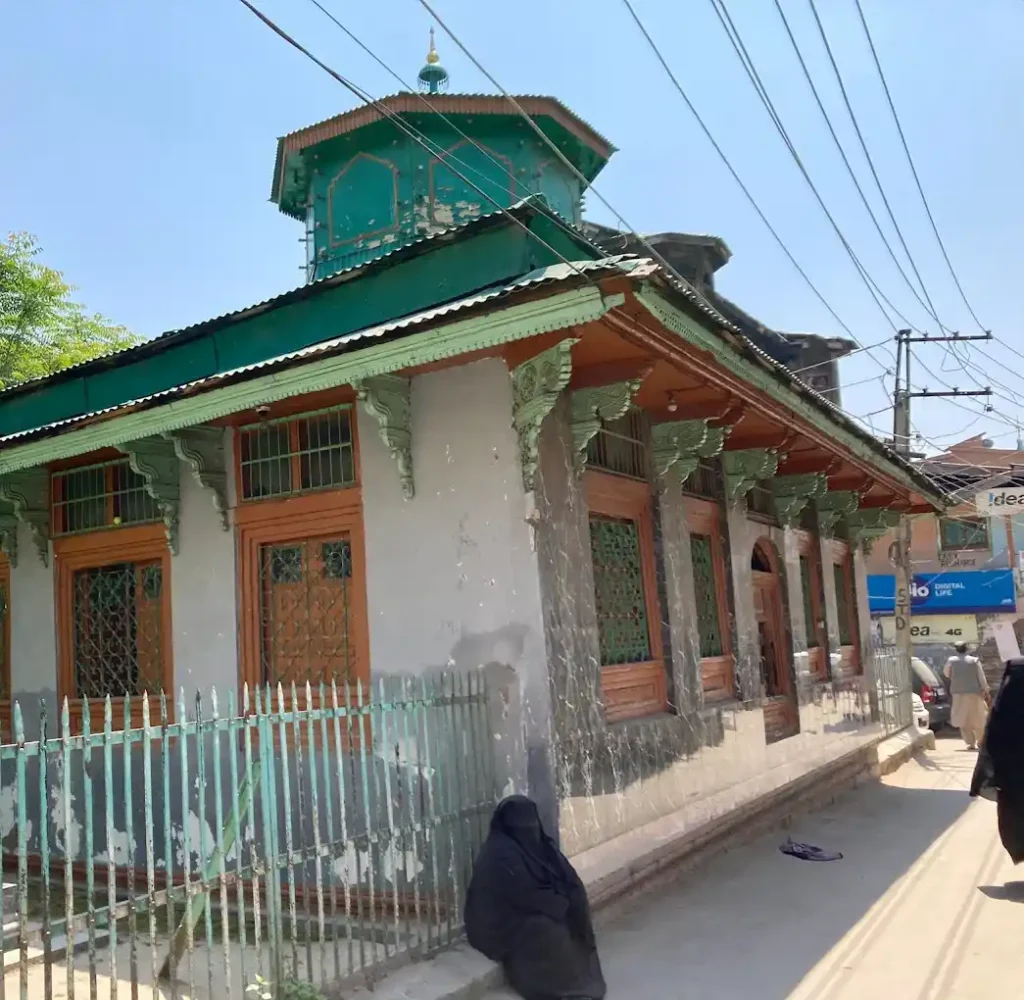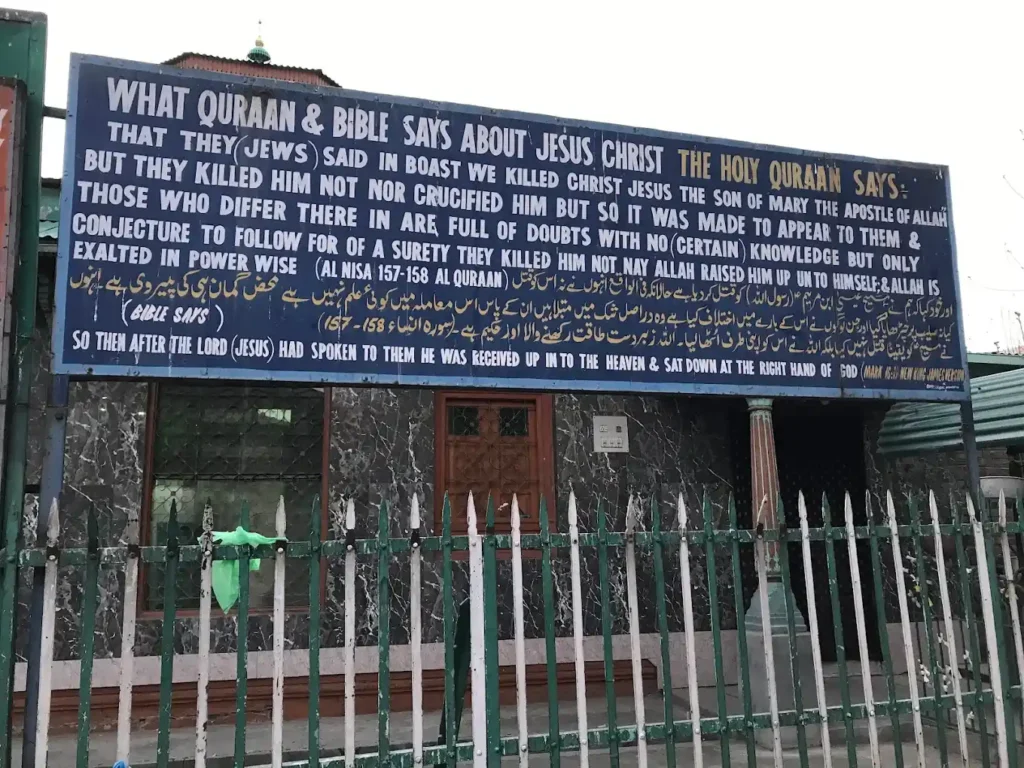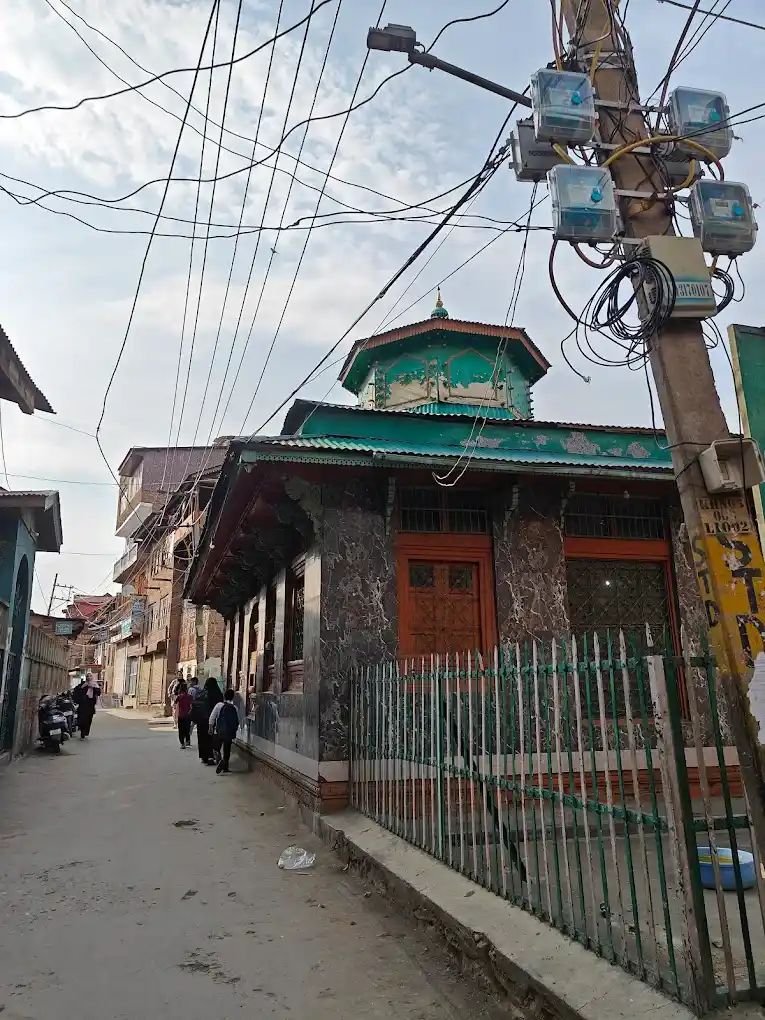In the heart of old Srinagar, in the region of Jammu and Kashmir, lies a place as modest as it is mysterious: the Rozabal shrine.
Hidden among the narrow alleys of the Khanyar neighborhood, this small rectangular building covered with brown marble slabs has become the center of one of the most controversial theories in modern religious history. For some, it is the tomb of an old Sufi saint; for others, it is where Jesus of Nazareth spent his final days and was buried.
Rozabal, a name derived from the Kashmiri Rauza-bal (meaning “sacred tomb” or “prophet’s grave”), houses two tombs. One belongs to Syed Naseeruddin, a well-documented Muslim saint and a direct descendant of the eighth Shia Imam. The other tomb is attributed to a mysterious figure named Yuz Asaf, around whom centuries of speculation and debate continue to swirl.
Who Was Yuz Asaf?
The earliest known reference to Yuz Asaf appears in the 18th-century Persian text Waqi’at-i-Kashmir, which describes a foreign prophet who healed lepers and was called the “Leader of the Healed.” In this context, “Yuz” means leader, and “Asaf” means healed. Some interpret this figure as Gautama Buddha, while others, like the mystic Mirza Ghulam Ahmad — founder of the Ahmadiyya movement — argued that Yuz Asaf was, in fact, Jesus Christ.
The Theory of Jesus in India
In 1899, Mirza Ghulam Ahmad published a pamphlet titled Razz-i Haqqiyat, later followed by his book Masih Hindustan Mein (“Jesus in India”), in which he claimed that Jesus did not die on the cross but survived and traveled east with his mother Mary. According to his account, Mary died along the way in what is now Murree, Pakistan, and Jesus continued to Kashmir, where he lived until the age of 120 and was buried in Rozabal.
This theory directly contradicts both Christian doctrine (which holds that Jesus was crucified, resurrected, and ascended into heaven) and Islamic teachings (which state that Jesus was taken to heaven alive). Nonetheless, the idea sparked intense interest among researchers, travelers, and spiritual seekers—though also fierce criticism from religious authorities.
Cultural Clues and Physical Evidence
Supporters of the theory point to several intriguing clues. For instance, Yuz Asaf’s tomb is oriented east-west, consistent with Jewish burial customs, rather than north-south as is typical in Islam. There are also stone impressions of feet at the shrine, which show marks resembling crucifixion wounds.
Some researchers argue that many Kashmiris, especially in villages like Gultibagh, may be descendants of the lost tribes of Israel—ten of the original twelve tribes that were exiled by the Assyrians in the 8th century BCE. Even today, some locals refer to themselves as Beni Israel (Children of Israel) and retain customs, physical traits, and oral traditions that echo ancient Jewish culture.
International researchers such as Nicolas Notovitch and Suzanne Olsson helped revive global interest in the shrine. Notovitch published The Unknown Life of Jesus Christ after visiting the region in the 19th century. Olsson, an American writer, claimed to be a direct descendant of Jesus and Mary Magdalene and even attempted to extract DNA from the tomb in the 1990s—a move that provoked legal action and heightened local tensions.
Doubts and Opposition
Despite the compelling narrative, many scholars and religious figures reject the theory for lack of conclusive evidence. Some local historians argue that the shrine was originally a Hindu or Buddhist site, later converted to a Muslim shrine. The name Yuz Asaf, they claim, may originate from Buddhist legends, where “Yuzasaf” refers to Gautama Buddha.
The current caretakers of the Rozabal shrine, Sunni Muslims, categorically deny that Jesus is buried there. The tomb is closed to the public and only opened on the 13th day of each lunar month. Signboards posted at the entrance cite verses from the Bible and the Quran affirming Jesus’s ascension to heaven, in an attempt to stop the spread of these theories.
An Unsolved Mystery
The story of Rozabal lies at the crossroads of faith, history, and cultural identity. For some, it’s a fascinating possibility that deserves deeper exploration; for others, it’s a myth born from speculation and spiritual longing. Either way, the shrine continues to draw curious travelers, mystics, and tourists.
Like many other unsolved mysteries around the world, the tomb at Rozabal is unlikely to yield definitive answers. But its power to raise questions—and spark the imagination—remains. Perhaps more than a place of historical certainty, Rozabal serves as a mirror reflecting the many ways people seek to connect with the legacy of Jesus in the East.





